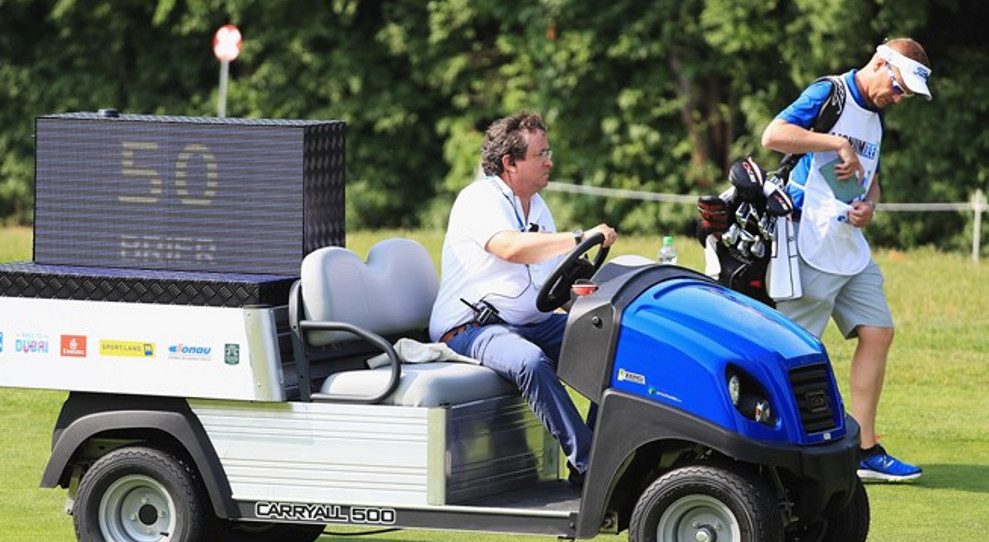The European Tour took a chance this week, taking a sponsorless Austrian Open and turning it into a live Petri dish called the Shot Clock Masters.
They put up a modest 1 million purse, and they asked the field to subject themselves to a time limit on every shot -- a time limit already written into the tour's player handbook but rarely enforced. If a player exceeded the time limit on any shot before calling one of their two available time extensions per round, they would be penalized one stroke.
Through three rounds, there have been three players who were assessed penalties, all in the third round:
- Clemens Prader took 4 extra seconds on a putt on the sixth hole, turning a 75 into a 76
- Grant Forrest took 3 extra seconds on an approach shot on the 15th hole, turning a 74 into a 75
- Andrea Pavan took 3 extra seconds on a putt on the 18th hole, turning a 72 into a 73
In other words, none of the three players who incurred a penalty were playing under-par golf. They were already playing themselves out of the tournament on Saturday, and the penalty stroke was only rubbing dirt in the wound. As for all the players in contention, including the ageless Miguel Angel Jimenez, the timer -- either 40 or 50 seconds, depending on order of play -- wasn't an issue.
The best part the Shot Clock Masters has been the reduction in round times. Jimenez's group on Thursday took 50 minutes less as a threesome than the average threesome in the same event a year ago. Generally speaking, threesomes took anywhere from 30-40 minutes less than last year's times. The shot clock will save less time in twosomes, but the perceived pace will be better for fans in attendance and on TV, who will spend fewer seconds waiting through chatter and pre-shot routines and standing over the ball before players get on with it.
It's important to note the Shot Clock Masters concept doesn't represent some kind of innovative approach to pace-of-place enforcement. This is already in the European Tour player handbook (and the PGA Tour's, too). The clock is merely there to remind players what they should be doing on their own, and the official there to enforce it is doing a job often assumed by annoyed fans rather than those with the power to enforce penalties on the ground.
It's easy to understand why an official might be naturally reluctant to assess those codified pace-of-play standards in every single instance. They have to deal with the players, their caddies, their better halves, their agents, their coaches, their sponsors and the public if they choose to tack on strokes that will have an effect on the final results. The beauty of the shot clock is it takes all of the interpersonal relationships out of it. If the clock strikes zero, the rule is enforced. Blame it on the clock, not the person. That's how it should be anyhow.
The player reaction has been largely positive. The fast players are thrilled to play at a pace they'd prefer instead of being held hostage by the unchecked pack of turtles. Many of the slower players have learned they, in fact, can play well within the confines of the rules they agreed to in the first place.
The next step is to expand the concept. The experiment worked. Do it again on the Challenge Tour -- the European equivalent of the Web.com Tour -- in the grand finale this year, when the difference of a penalty stroke could mean losing European Tour status for next season. Work out any logistical kinks and get this thing going on the European Tour every week. Maybe the Tour can offer a few more time extensions per round in bigger tournaments, or they could allow players to bank their extra time in lieu of simply adding a predetermined amount of extra time.
The PGA Tour could try this, too, doing so in opposite-field events. The American players seem to need a little more convincing of the concept, so experiment first in events without the potential most-vocal whiners. The Tour could even slip in some sponsor components to it. Get a watch company involved to sponsor the clock, then give a watch to the slowest player based on average time. Run ads in between holes on the timer screens.
It can all work out.
There's no downside to bringing timing into professional golf. The clock enforces the rules, taking the personal touch and potential conflict out of it. The rounds go faster, leveling the playing field for quicker players. Best of all, the fans get a better product.

